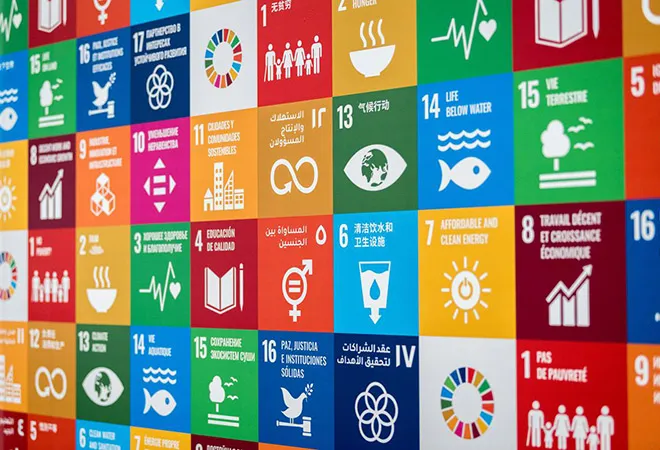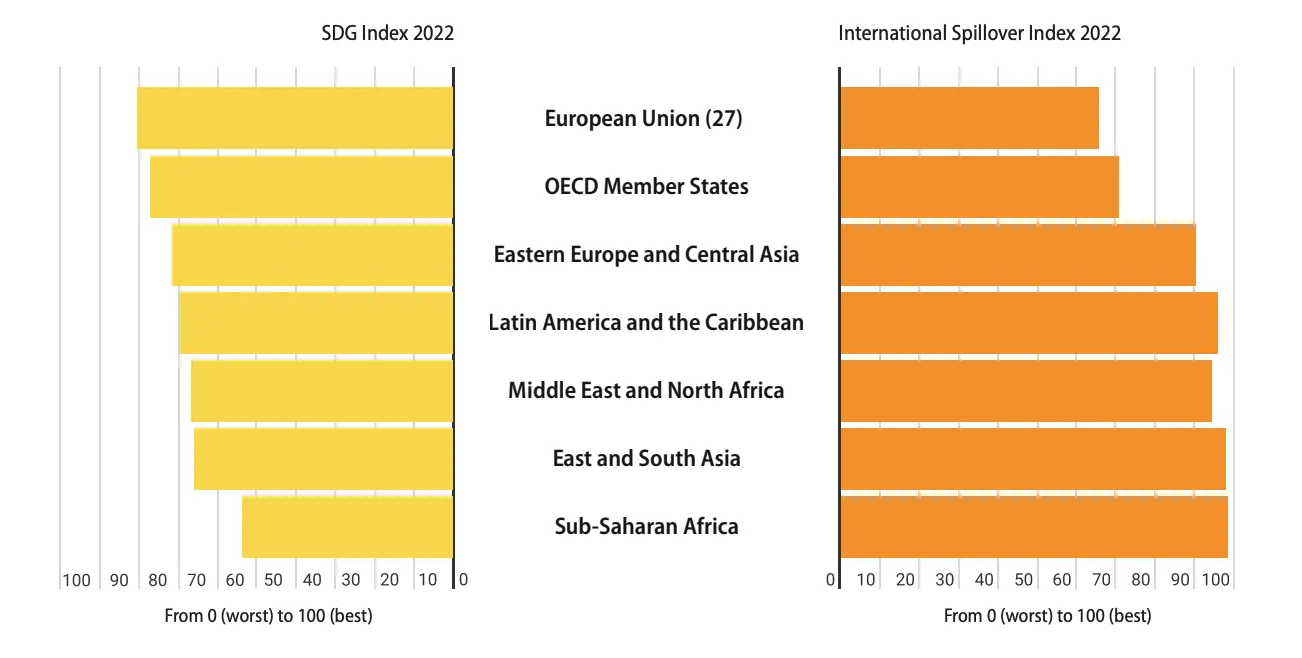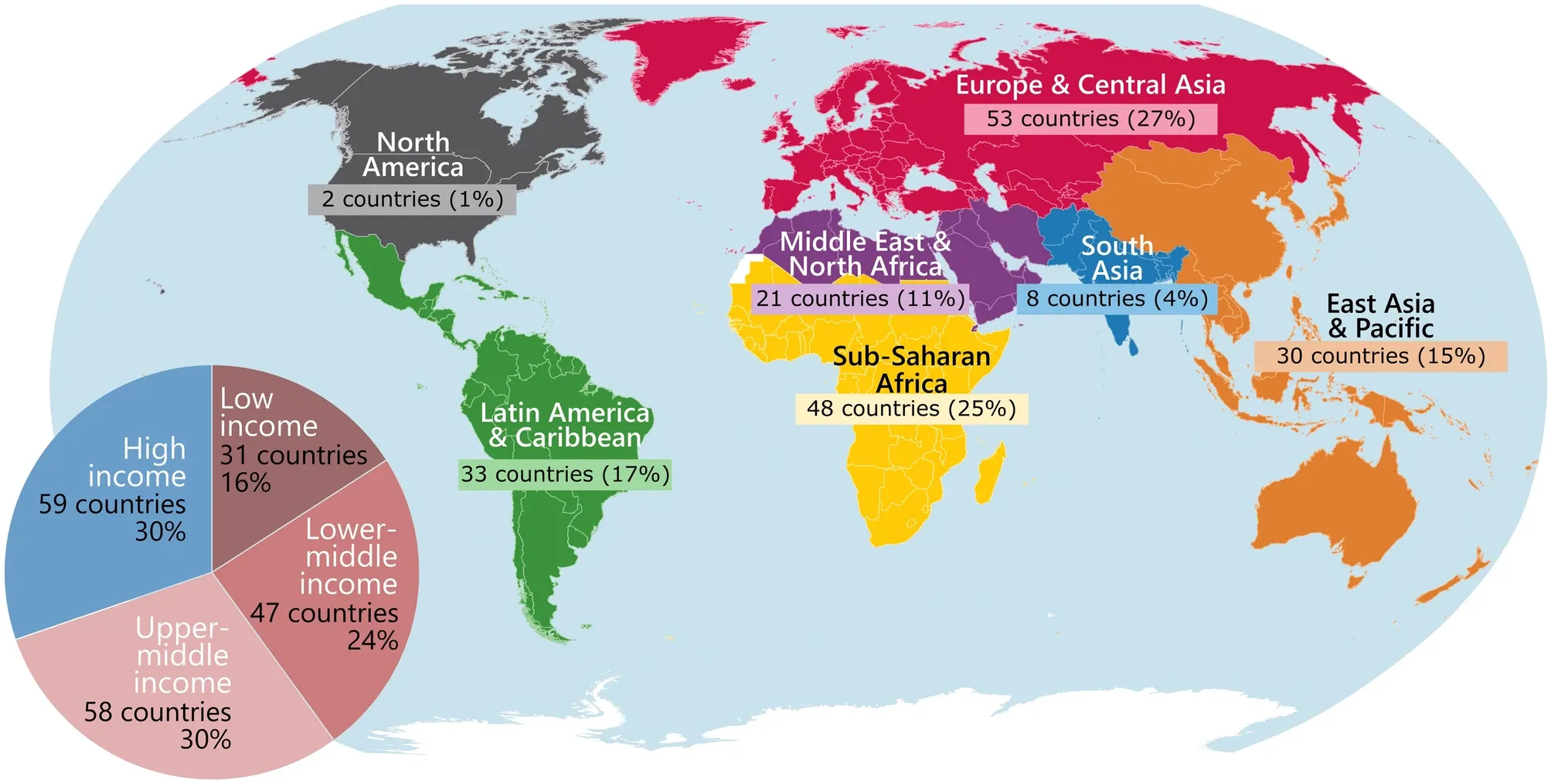
Global North-South divergences have been historically characterised by major gaps in the access to resources required for crucial developmental outcomes.
Industrialisation, for example, has been skewed in the favour of advanced economies since the early 1960s, and no major evidence of global convergence was found in this regard. Most of the nations which were once colonised failed to join the different phases of industrialisation and therefore remained in the underdeveloped and developing parts of the world. The way the pandemic has affected both spheres can also be witnessed in the way existing divides have further exacerbated. Not only have the countries faced different challenges in dealing with the initial phases of the pandemic, but the social and macroeconomic implications being faced today have been far worse for the global South. The vulnerability of the domestic economies is far more apparent now in countries ranging from Argentina and Egypt to Pakistan and Sri Lanka.
Apart from only considering economic progress as the backbone of development, the contemporary sustainable development framework, or the Sustainable Development Goals (SDGs) also present a gamut of parameters encompassing tenets of social, physical, human, and natural capital enhancement. The North-South divide is highlighted in these realms as well. Gender differences (SDG 5: Gender Equality) have been
worse in the South than they have been in the North due to vast differences in awareness as well as material deprivation. Kenya, for example, witnessed a
34-percent increase in the calls for help against domestic abusers in the first three weeks of night curfews. Women were further present in higher numbers in
casual employment and were more severely affected due to unemployment and indebtedness induced by the pandemic.
Most of the nations which were once colonised failed to join the different phases of industrialisation and therefore remained in the underdeveloped and developing parts of the world.
Studies on the domain of education (SDG 4: Quality Education) showed how an uneven adoption of technology led to some countries being unable to ensure that education was not affected by incessant physical restrictions. Students in developed countries lost an average of 15 school days in 2020, with the numbers rising to 45 and 72 for children in developing and underdeveloped nations respectively. The impact on income was also far higher in developing nations than the advanced ones.
The social security programmes run by governments show further evidence of their differentiated ability to protect their people. For example, adult citizens in the US received stimulus checks and other
benefits worth a combined total of US$ 2.2 trillion. On the other hand, government efforts in developing countries were
found to be largely insufficient. Given this background, the urgency of achieving the developmental objectives becomes even more relevant for the developing and underdeveloped world in the post-pandemic world. Although the pandemic and its economic impacts have made the SDG Agenda 2030 a very difficult deadline for the entire world, the global South faces the maximum brunt of it. Two major hindrances warrant a discussion.
SDGs and Spillovers
The recent
SDG report published in 2022 by Cambridge, scores regions and countries by their international spillover quotient—which indicates the positive or negative effects that a nation’s activities can have on other countries. These can be environmental and social impacts embodied in trade, economy or finance, and security. Domestic resources are often needed to be diverted to counteracting the effects of foreign activity, which is highly counterproductive when one has nothing to do with the activity in the first place. A higher spillover score is a result of proportionately fewer negative externalities caused by the country in question and vice versa. Interestingly, although the richer parts of the world such as the EU or OECD rank higher in terms of overall SDG achievement, they impose major challenges on the poorer regions through negative environmental and socioeconomic spillovers that are perpetrated through unsustainable trade and supply chains.
Figure 1: SDG Index Score versus International Spillover Index Score
 Source: Sustainable Development Report 2022
Source: Sustainable Development Report 2022
The disparity exhibited in the above figure is evidence of how developed nations tend to have far worse spillovers onto other nations than developing or developed nations, impeding the latter from reaching their SDG objectives. Since developed economies have been estimated to
overcome their pre-pandemic growth predictions by 0.9 percent, this seems to be at the cost of developing economies, who were estimated to perform 5.5 percent below it by 2024. Latin America and Sub-Saharan Africa are the worst affected by this phenomenon.
Stable relationships between countries are essential to achieving SDGs. Cooperation and accountability mechanisms must be built up to make sure that the recipient countries of such negative spillovers do not have to completely bear the burden of implementing the recovery efforts—as a step forward toward greater equity in global sustainable development frameworks.
Uneven collaborations between the North and South
The implementation of the 2030 Sustainable Development Goals requires collaboration between all stakeholders across countries. The
SDG 17 (Partnership for the Goals) aims to “strengthen the means of implementation and revitalise the global partnership for sustainable development.”
A study of the nature of SDG partnerships across developed and developing countries found that involvement is unequally distributed in favour of developed economies. Partners from low-income countries are involved in fewer collaborations than partners from developed countries.
Figure 2: SDG Partnerships across the world
 Source: Scientific Reports, Nature.com
Source: Scientific Reports, Nature.com
The above map shows the distribution of SDG-related projects in various countries. Although a major chunk of these projects lies in the global South, the pie chart indicates that registered partnerships were skewed towards collaborators belonging to the global North: 30 percent from high-income countries and 30 percent from upper-middle-income countries versus 24 percent from lower-middle-income countries and 16 percent from low-income countries. Such a trend will undoubtedly amplify the North-South divergences in approaching the SDGs, with the developing and underdeveloped world further losing out on the global development trajectory.
The pandemic should not lead to calls for the SDGs to be revised but instead be used as a
catalyst for collaboration. The COVID-19 pandemic brings to the forefront issues related to access: The consequences of not having adequate healthcare; not having potable drinking water and sanitation facilities; and not having basic civil rights for immigrants, among others. A universal roadmap for resilient societies should take into account the three broad pillars of sustainable development—people, planet, and prosperity—with the overarching objective to ‘leave no one behind’.
The author acknowledges Rohan Ross at NLSIU, Bengaluru, for his research assistance on this essay.
The views expressed above belong to the author(s). ORF research and analyses now available on Telegram! Click here to access our curated content — blogs, longforms and interviews.



 Global North-South divergences have been historically characterised by major gaps in the access to resources required for crucial developmental outcomes.
Global North-South divergences have been historically characterised by major gaps in the access to resources required for crucial developmental outcomes. 

 PREV
PREV


